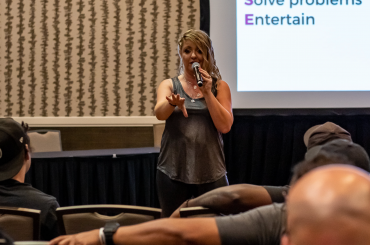We’re not too broken up about big Michael Lynche getting booted from American Idol. We were unmoved by his performance of Michael Jackson’s “Will You be There” from Free Willy—a movie we could never rally embrace, as we enjoy dining on whale when visiting Iceland or out on a Japanese marine research vessel.
But that voice on Lynche! If he has no plans to try out for 4th and Long, we know a recording studio beckons, if he’s not inside one right now. Here are some tips on EQing vocal tracks:
More than hi hats, kicks and bass, vocals can be the most difficult to EQ. They tend to be the most expressive aspect of a song, and the most often multi-tracked element. Assuming you’ve already established a groove, such as the kick or bass, the first thing you need to do is to low cut your vocal track to the point where you begin to lose the necessary low end. Immediately back off a bit on the frequency and steepness, and then fine-tune all the parameters to taste.
Next, do the same with a high cut filter until things dull, setting the frequency, steepness and Q as done with the low cut. Then try to cut out any unwanted resonances—which usually reside in the 120-350Hz range (and elsewhere if they are present). From here, cut to taste while keeping the sound thick, and then try boosting @ 2 or 3 kHz depending on if it’s a male or female in order to increase the comprehensibility.
You should cut sibilance by hand at every ‘S’ sound by automation rather than with a de-esser. Trust us, it gives a more accurate result. This can be begun here as a rudimentary loop step just to give a general feel for how things sit, but the full on automation should occur later as the vocal and track progress.
Much respect to Audiotuts+






